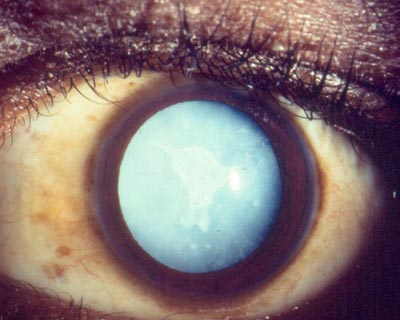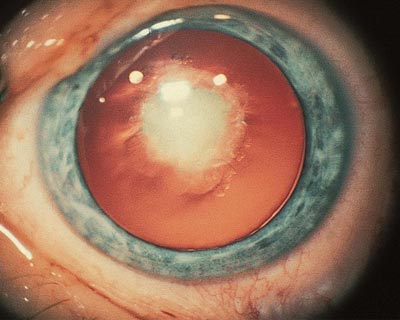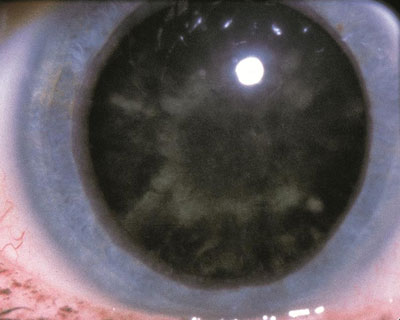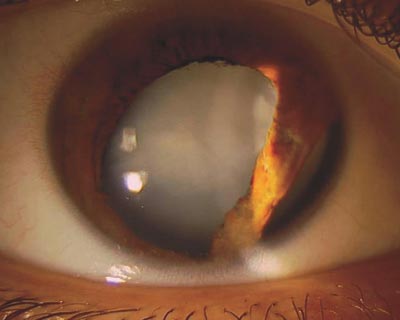What Do Cataracts Look Like?
Cataract Pictures and Videos
Cataracts come in different types, and develop for different reasons. Here are some photos showing a few types of cataracts.
Mature Cataract (Nuclear)

A mature cataract means the cataract has become large and dense (seen in this photo as the bluish/white area in the middle of the eye). With a mature cataract, the eye’s lens is opaque (meaning you can’t see through it), severely limiting vision. This cataract is a nuclear cataract, which means it forms deep in the center of the lens (nucleus).
Congenital Cataract

A congenital cataract is found in a baby’s eye at birth. In this image, the congenital cataract is the white, circular area in the middle of the eye. Children’s eyes and vision continue to develop until they are around 10 years old. If a congenital cataract is not treated early, a child’s vision can be affected for life.
Diabetic Snowflake Cataract

People with diabetes mellitus are at greater risk of developing cataracts. Uncontrolled levels of blood sugar lead to changes in the eye’s lens. The cataract pictured here, called a diabetic or “snowflake” cataract, is sometimes seen in people with uncontrolled diabetes. It has a grayish-white starburst or snowflake appearance.
Traumatic Cataract

A cataract can develop after trauma to the eye, either by blunt force (like a blow to the eye) or by something penetrating into the eye. This is a photo of an eye after a paintball injury. A cataract can be seen as the cloudy, white area in the middle of the eye. Part of the iris is separated (see the brownish-orange area on the right side). Thousands of eye injuries happen every day, yet nine out of 10 of them are preventable by wearing appropriate safety eyewear.